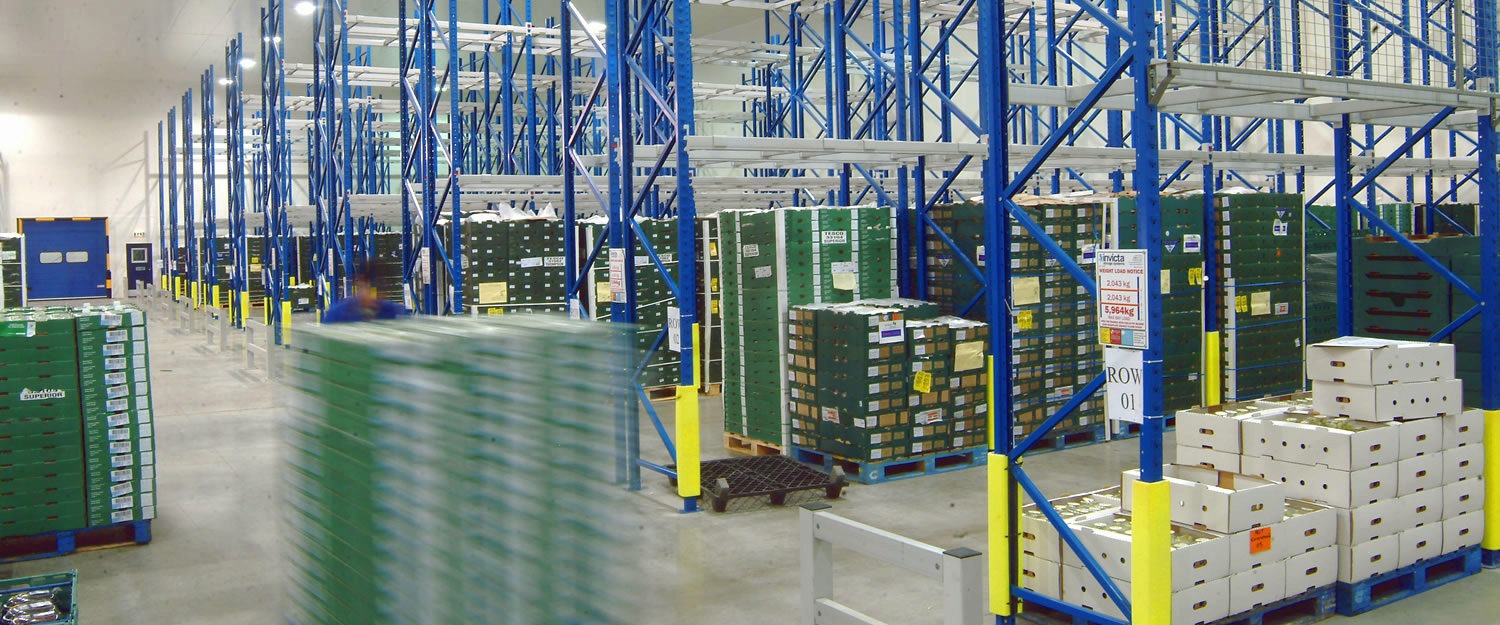For your information
You are being redirected to one of our divisional subsites which contains more detailed information on the required division. To navigate back to the main Invicta Group site, please click the link found in the footer at the bottom of the page.
How to save space with smarter warehouse storage
26th September 2022
Quick Quote
Contact Mick Coyne
To get a quotation or arrange a free site survey - Call Mick Coyne on
-
 UK
UK
Current location:
Quick Quote
Contact Mick Coyne
-
 UK
UK
Current location:
In an increasingly competitive online ecosystem, warehouses and distribution centres have to run at peak efficiency. Companies like Amazon maintain their dominance through their extremely streamlined retrieval and distribution process, with a combination of highly regimented staff, automation and other cutting-edge technologies giving them the edge in the eCommerce arms race.
While not every business can be like Amazon, there are plenty of means to improve the efficiency of your warehouse storage and distribution centres. While staff and operations have a part to play, one of the lesser utilised methods is installing new forms of storage. The efficiency savings conjured by these more dense and intuitive units are already making a difference for businesses around the world, and could free up capital to expand premises and personnel.
High density racking
Scaling up to new premises is a cost-intensive hurdle that many small and medium sized businesses don’t manage to clear. This is a particular issue in the United States, where it’s thought that facilities on average make effective use of just 25 to 30 percent of their space, compared to between 70 and 75 percent in Europe and Asia.
While manufacturing is undergoing something of a renaissance in the US, these old, inefficient facilities and methods mean that businesses can struggle to compete, and to generate the capital they feel is necessary to expand. What many are only just starting to realise is that there are alternative racking options which can use existing space more efficiently, at a relatively low cost of acquisition.
Where many facilities currently use three-pallet-high storage systems, newer pallet racking can be far more dense. Narrow aisle pallet racking systems for instance can reduce aisle width by 50% with the help of specialist handling equipment. Cranes, wires and rails in and alongside the racking units can guide trucks and operators to their desired items, reducing the risk of damage and increasing the safety of load handling.
Automation (AS/RS)
The next step beyond these guided pallet racking layouts are fully automated racking systems, known as automated storage and retrieval systems (AS/RS). An AS/RS system allows for storage on eight or more tiers, squeezing over 14,000 pallets into 30,000 square feet of floor space. This can represent as much as a 70,000 sq/ft saving on traditional three-tier layouts, saving money for internal and external expansion.
In an AS/RS storage system, automated pallet moving vehicles travel along a guided roller or rail. A series of lifts then raise the vehicle to the designated pallet, where it is quickly and safely retrieved; the removal of the item can also be automatically logged as part of an inventory system. This reliability has the potential to cut down on shrinkage, as well as yielding safety and productivity improvements.
Installing an AS/RS system isn’t cheap, but it often works out as cheaper than expanding to an entirely new facility. It also reaps immediate rewards: automated retrieval tends to be as fast if not faster than manual retrieval, and is often more reliable. The need for only basic oversight also frees up warehouse staff to be reassigned in other areas.
Mobile storage
For facilities with less vertical space or more compact goods, mobile storage is likely to be the first port of call. These compact racking and shelving systems occupy 50% of the space of static shelves and racking on average, meaning that a business can either double its storage capacity, or halve its storage footprint. In many cases it can also improve accessibility and retrieval times, with the ability to spot your required aisle more quickly as they are bunched together.
Mobile storage systems operate on rails with powered bases. When not in use, the shelving units are locked together to save space. When access is required to one of the units, a manual hand crank or powered system can roll the shelves apart in a concertina motion, creating an aisle between them. Operators can then retrieve the items unobstructed, before compressing and locking the shelves back together.
These systems provide an obvious benefit to security and item location, while the ability to opt for full or part automation caters to a range of access requirements. The high density nature of the storage allows more product to be packed into less space, while the ease and speed of access also creates an efficiency saving in labour, allowing workers to be deployed elsewhere.
FIFO storage
For even smaller products, ‘first in, first out’ storage (known as FIFO) may be the ideal solution. This storage system variant ensures that the oldest products are withdrawn from storage first, making it ideal for products with expiration dates, such as foodstuffs and pharmaceuticals. FIFO systems use titled flow racks, where products shift forward and replenish from the back whenever the front item is removed.
A properly managed FIFO system means that workers never have to check expiration dates before moving an item on, saving a substantial amount of time. The tilted, front-facing nature of the system also means that products are more visible and accessible, increasing accuracy and reducing shrinkage and mispicks. The convenience and individual product-focused design can also reduce the strain on operators, who do not have to reach for, open or move large boxes of items to access the ones they need.
—
While many businesses still look to eCommerce storefronts, management software and practices as a means to improve productivity, there remain many efficiency savings to be made in the physical distribution and manufacture of goods. Efficient storage and retrieval is perhaps the most neglected aspect of this, and savvy businesses will increasingly look to mobile, high-density and automated storage options to make their businesses more competitive.











Share/Like this page